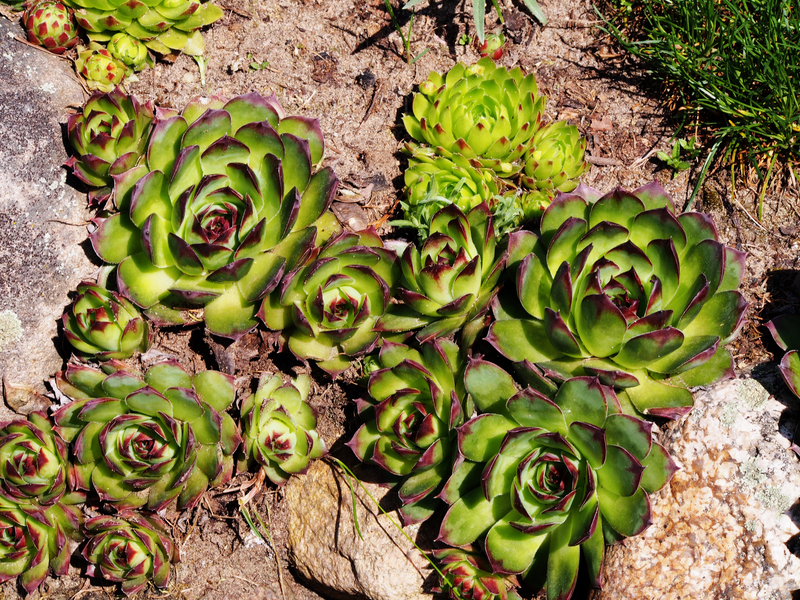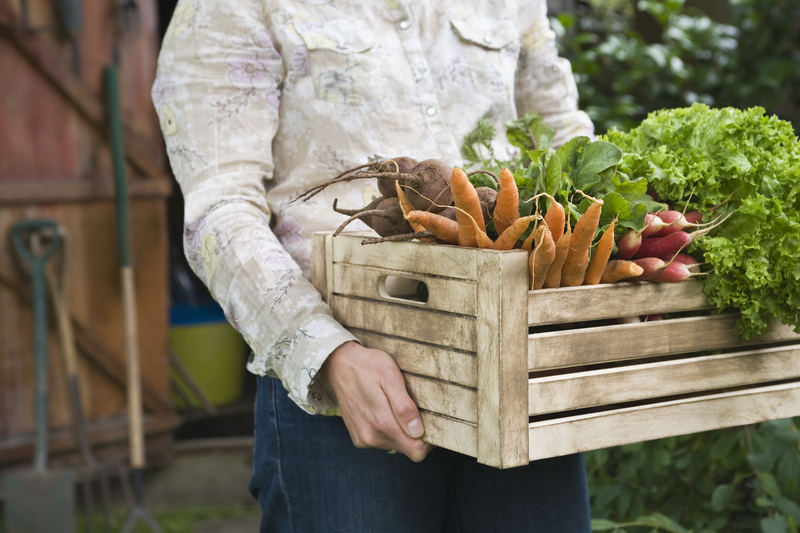Container Gardening: Simple Steps to Lush Living
Posted on 17/06/2025
Container Gardening: Simple Steps to Lush Living
Are you looking to bring a touch of green to your urban abode, balcony, or even your windowsill? Container gardening is an accessible and rewarding approach for gardeners of all levels. With the right technique and a little creativity, you can transform even the smallest of spaces into a vibrant oasis. In this comprehensive guide, we'll walk you through step-by-step instructions, pro tips, and highlight essential knowledge to help you master container gardening for a lush, thriving home environment.
What is Container Gardening?
Container gardening, also known as pot gardening or patio gardening, is the practice of growing plants in containers instead of planting them directly in the ground. This gardening method works perfectly in limited spaces, and it provides numerous advantages:
- Mobility: Easily move containers to catch the optimal sun or to redesign your garden's layout.
- Flexibility: Choose from a wide variety of plants, from flowers to vegetables and even small trees.
- Accessibility: Great for people with limited mobility or those living in apartments and urban settings.
- Pest and disease control: Fewer soil-borne problems and more control over the growing environment.
Container gardening is an innovative, versatile, and sustainable way to beautify your living space with minimal effort and maximum creativity.

The Benefits of Container Gardening
If you're still wondering whether to give container gardening a try, consider the following benefits of container gardening:
- Space Efficiency: Grow a lush garden even in the smallest spaces such as patios, balconies, or windowsills.
- Control Over Conditions: Adapt soil types, irrigation regimes, and even microclimates for each plant.
- Extended Growing Season: Move containers indoors during cold weather for year-round gardening.
- Personalization: Express your creativity with unique containers, plant combinations, and layouts.
Essential Elements for Lush Container Gardens
To ensure your container garden thrives, you need to understand some core components:
Choosing the Right Containers
The success of container gardening begins with the right vessel. Here are key factors to consider:
- Size: Ensure your container is large enough for root growth. Herbs and flowers often thrive in pots 6-12 inches deep, while vegetables may need deeper pots.
- Material: Select from clay, ceramic, plastic, metal, or wood. Each material has pros and cons relating to weight, insulation, and aesthetics.
- Drainage: Vital for healthy roots. Ensure containers have adequate drainage holes to prevent waterlogging and root rot.
- Color: Dark containers absorb more heat, while lighter ones help keep roots cooler in summer.
Choosing the Best Potting Mix
Don't use regular garden soil in containers--it compacts and drains poorly. Instead, opt for a high-quality potting mix formulated for containers. Mixes often include:
- Peat moss or coconut coir for water retention
- Vermiculite or perlite to increase aeration
- Compost to provide organic nutrients
You can also customize your soil mix to tailor nutrition and drainage for specific plants.
Sunlight: Finding the Perfect Spot
Proper light is critical for plant health. Assess your available spaces for sunlight exposure:
- Full sun: 6+ hours of direct sunlight, ideal for vegetables and most flowers.
- Partial sun/part shade: 3-6 hours of sun; great for herbs and leafy greens.
- Shade: Less than 3 hours of direct sun; best for shade-loving plants like ferns and impatiens.
Simple Steps to Start Your Container Garden
Ready to dig in? Here's an easy-to-follow guide for beginners and experts alike:
1. Plan Your Container Garden
- Sketch the area you want to fill with containers, noting the light levels and available space.
- Decide the look you want--herb garden, edible vegetables, flower oasis, or a lush mix?
- Choose color schemes, shapes, and heights for visual interest.
2. Select Your Containers and Plants
- Pick containers to match your space, design, and plant requirements.
- Choose plants with similar sunlight and watering needs for each container grouping.
- Consider plant combinations such as "thrillers" (tall centerpiece plants), "fillers" (bushy mid-height), and "spillers" (trailing plants) for a full, lush effect.
3. Create the Perfect Potting Mix
- Use a premium potting mix or blend your own with peat/coconut coir, compost, and perlite/vermiculite.
- Add slow-release fertilizer to provide nutrients over the season.
- Moisten the potting mix before planting for best results.
4. Potting Your Plants
- Fill your container one-third full with potting mix.
- Remove plants from nursery pots, loosen roots gently, and arrange them in the container.
- Fill in around plants with more mix, leaving about one inch of space from the rim for watering.
- Water thoroughly until water runs out of the drainage holes.
5. Position and Care For Your Container Garden
- Place your containers in their planned positions, considering the sunlight needs of each plant.
- Rotate pots every few weeks to ensure even growth.
- Monitor soil moisture daily, especially in hot weather--containers dry out more quickly than garden beds.
- Add mulch, such as pebbles or bark, to retain moisture and reduce weeds.
Popular Plants for Container Gardening
Some plants are particularly well-suited to thriving in containers. Here's a selection for inspiration:
- Herbs: Basil, thyme, rosemary, parsley, mint
- Vegetables: Tomatoes, peppers, lettuce, kale, spinach
- Flowers: Petunias, pansies, geraniums, marigolds, impatiens
- Shrubs & Small Trees: Dwarf citrus, boxwood, dwarf conifers
- Succulents: Sedum, echeveria, jade, aloe
Mixing edible and ornamental plants can add diversity and beauty to your lush living container garden.
Maintenance for a Healthy and Vibrant Container Garden
Consistent Watering
Watering is the most crucial--and challenging--aspect of container gardening. Containers dry out rapidly, especially in summer. Follow these guidelines:
- Check soil daily; water when the top inch feels dry.
- Water deeply so roots grow downward.
- Avoid standing water; good drainage is essential.
- Consider adding self-watering systems for convenience.
Feeding Your Plants
Fertilize regularly for lush, robust growth. Container plants exhaust nutrients quickly, so supplement with a liquid fertilizer every 2-4 weeks or use slow-release granules at planting time.
Pruning and Deadheading
Regular pruning keeps plants healthy and attractive. Deadheading (removing spent flowers) encourages more blooms and lusher growth.
Managing Pests and Diseases
- Inspect your plants frequently for signs of pests or disease.
- Remove affected leaves, and use natural remedies (such as neem oil or insecticidal soap) when needed.
- Good air circulation and avoiding overcrowding helps prevent problems.
Pro Tips for Spectacular Container Gardens
- Group containers together for dramatic visual appeal and shared microclimate benefits.
- Layer pots on shelves, steps, or plant stands to maximize your use of vertical space.
- Switch out plants seasonally--enjoy spring bulbs, summer annuals, autumn foliage, or winter evergreens.
- Experiment with unique containers, like recycled barrels, baskets, or upcycled items for a personalized touch.
- Use mulch or decorative stones for both beauty and water retention.
Common Container Gardening Mistakes (and How to Avoid Them)
Even enthusiastic gardeners can slip up. Beware of these common pitfalls:
- Overwatering--Plant roots can't breathe if soil stays soggy.
- Container Overcrowding--Leave enough space for each plant to thrive.
- Ignoring Drainage--Always ensure drainage holes are open and unobstructed.
- Using the Wrong Soil--Garden dirt compacts in pots; always use proper potting mix.
- Neglecting Sunlight Needs--Group plants by similar light requirements for best growth.
Eco-Friendly Container Gardening: Sustainable Practices
Eco-conscious gardeners can take steps toward sustainability:
- Reuse and recycle containers, or choose biodegradable pots.
- Collect rainwater for irrigation to save water.
- Compost kitchen scraps to enrich your container soil naturally.
- Grow pollinator-friendly flowers to support bees and butterflies.
- Choose native plants that require less water and resist pests.
Inspiration: Designing Your Lush Container Garden
The beauty of container gardening lies in its vast potential for personalization. Here are some ideas to ignite your creativity:
Urban Oasis
- Arrange tall palms or bamboo in large pots to create privacy on a balcony.
- Add trailing vines and scented flowers for sensory appeal.
Edible Patio Garden
- Combine tomatoes, peppers, basil, and marigolds for a colorful, edible display.
- Use stacked planters for an upright herb garden, perfect for small spaces.
Seasonal Color Splash
- Swap out annuals with the changing seasons for year-long beauty.
- Mix pansies and tulips in spring, dahlias and petunias in summer, chrysanthemums in fall.

Frequently Asked Questions About Container Gardening
How much sunlight do container gardens need?
The amount of sunlight depends on plant varieties. Most vegetables and flowers prefer full sun (6+ hours), but many herbs and shade-lovers can thrive with less. Check plant tags or guides for individual needs.
How often should I water container plants?
Container gardens generally need more frequent watering than garden beds. Check soil moisture daily, and water when the top inch feels dry. In hot weather, containers often require daily watering.
Can I reuse old potting soil?
Yes, but refresh it by removing old roots, mixing in compost, and checking drainage. Adding some new potting mix will help restore nutrients.
Do all containers need drainage holes?
Yes! Proper drainage is essential; otherwise plant roots may rot. If your decorative pot lacks holes, place a nursery pot with drainage inside it.
Conclusion: Lush Living Made Simple
Container gardening opens the door to a vibrant green world, no matter your space or experience level. By choosing the right containers, soil, and plants, and practicing a few expert tips, you'll create a thriving, lush container garden that enhances your living environment. Whether you dream of a fragrant patio, a homegrown herb collection, or a riot of colorful flowers, container gardening makes lush living accessible to everyone. Get started today and watch your personal oasis grow!
Ready to begin your container gardening adventure? Share your container garden creations or questions in the comments below!

